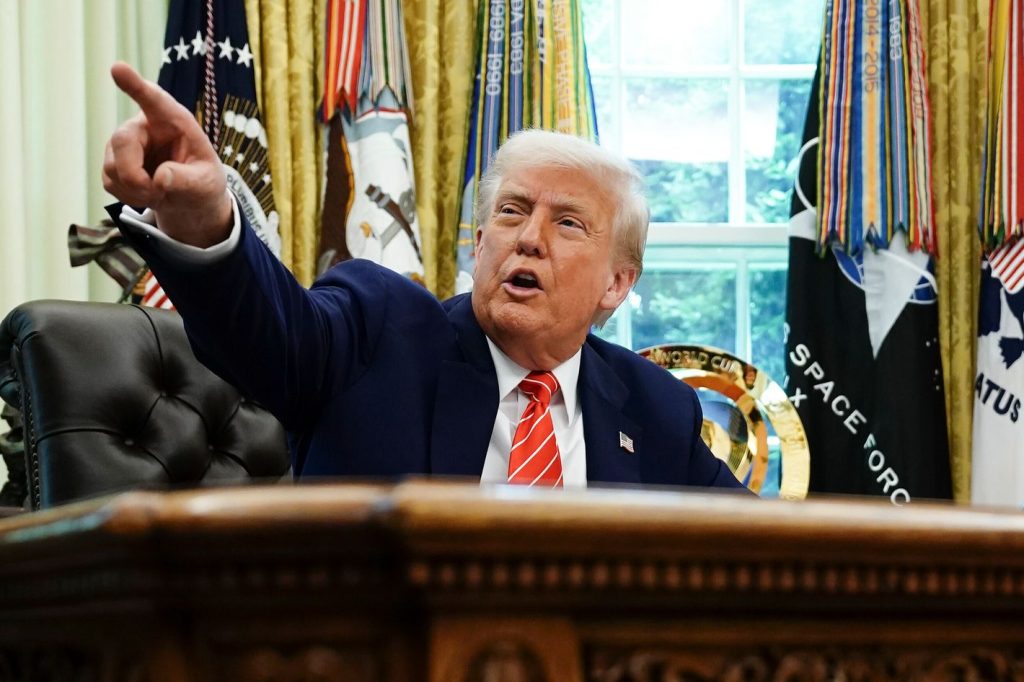Photo: Haiyun Jiang/The New York Times/Redux
Amid the chaos and confusion of Trump 2.0, the administration and its MAGA fans often argue that the democratically elected president is simply trying to implement the agenda he clearly announced during the campaign and is being obstructed by “Radical Left activist judges” determined to thwart the will of the American people. Aside from the fact that there are plenty of legitimate questions about what Trump voters thought they were voting for, there’s a fundamental problem with the idea that the administration has no choice other than fighting it all out in the courts.
If there is a parallel universe out there somewhere, there’s a world in which much of what Team Trump wants to accomplish policy-wise could be done in a perfectly legal and orderly way, without the endless litigation and the risk of a constitutional crisis we see nearly every day. For example:
• The Department of Government Efficiency’s wild and unauthorized eliminations of federal programs and cuts in spending, grant disbursements, and contract payments could have been accomplished through a largely supine and Republican-controlled Congress via the “One, Big, Beautiful Bill,” upcoming appropriations bills, and rescissions to claw back current-year spending. None of these avenues would have produced the kind of widespread legal challenges that Elon Musk’s destructive handiwork has generated.
• The administration’s federal payroll-slashing reductions in force that are currently the object of multiple judicial orders could have been accomplished in a more orderly manner with some attention paid to individual agency rationales for layoffs instead of hustling employees out the door as rapidly as possible. Such RIFs might have still been challenged by public-employee unions and the affected personnel but with a lot lower odds of success.
• The chaotic and judge-defying deportation of immigrants to third-party countries, which has created so much pain and havoc, could have been pursued with far less legal peril in a number of ways. For starters, the administration could have limited its initial targets to immigrants guilty of serious crimes, enhancing the plausibility of claims that the deportations represented a national-emergency undertaking. Immigration and Customs Enforcement could have deployed less thuggish apprehension tactics at a relatively modest additional cost. Priority could have been given to immigrants whose home countries were willing to accept them, avoiding the scandal of using a rent-a-prison in El Salvador or dumping deportees in conflict-ridden places like South Sudan, Libya, or Rwanda. More generally, the administration could have placed less reliance on scaring the hell out of immigrants and more on operating in a calm and predictable manner. The real proof of the ineffectiveness of the current administration strategy is the relatively low number of actual deportations. It seems plausible that just as many people could have been deported without all the disorder and gratuitous cruelty.
• The “Liberation Day” tariff regime that is in such trouble in the courts that Donald Trump has denounced his own judicial vetting process could definitely have been pursued using less dubious legal rationales. The administration insisted on an unprecedented interpretation of the International Emergency Economic Powers Act to impose most of his proposed tariffs instead of relying on powers granted by Congress in statutes governing foreign unfair trade practices over the years. As in other areas, Trump could have avoided legal challenges altogether by asking his slavishly loyal Congress to exercise its clearly constitutional prerogatives to raise tariffs. Indeed, this strategy might have caused a crisis in the opposition camp by making Democrats choose between agreement with Trump or implicit support for a free-trade regime many of them profess to despise.
But no: In area after area, the administration has ignored available channels for accomplishing its goals without wide-ranging court battles.
The more you survey the Trump 2.0 agenda and the strategic decisions the administration made about implementing it, the clearer it becomes that Team Trump is at least as interested in testing and stretching the boundaries of presidential power as it is in accomplishing any of its policy objectives. That’s not terribly surprising given Trump’s personal inability to conceive of any limitations on his power, which he seems to believe derives from a combination of divine blessing and serial exaggerations of his margin of victory in 2024. Several of his top aides, most notably policy chief Stephen Miller and Office of Management and Budget director Russell Vought, share extreme notions of what a president should be able to do as well. But the idea that “activist judges” are forcing him to consider authoritarian means for governing has it backward. He’s paving the way for authoritarianism by insisting on powers no other president has consistently claimed and that he doesn’t actually need, even if you buy his notions about the requirements of American greatness.

